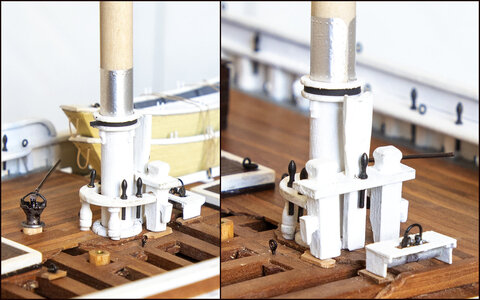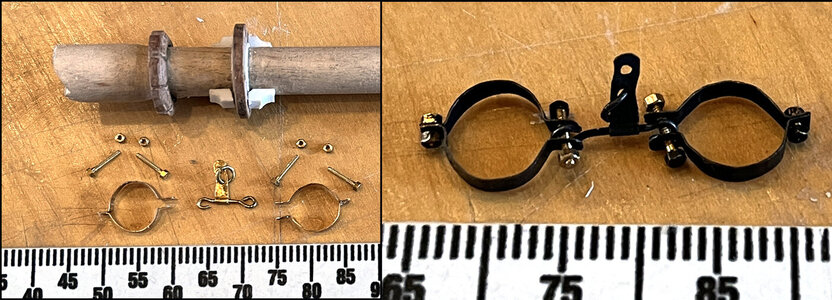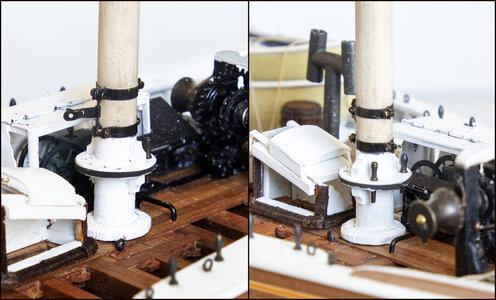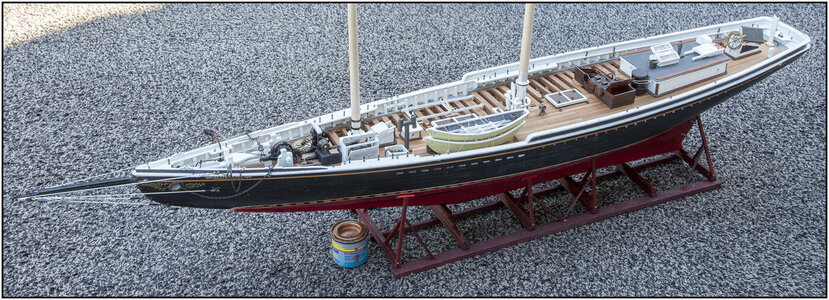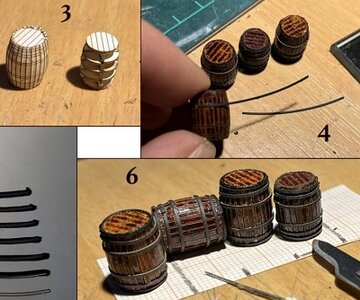Because I haven't received the ordered deadeyes yet, I started working on the masts.
Together with the fellow BN builder Johan
@RDN1954 we had the idea that the masts from the kit were 'a little too big'. The round timber for the masts, booms and gaffs is already gutted at length and has also been rejuvenated.
In The Sage is a drawing with all the round wood, stating the (natural) English sizes. Only it is a reduced edition of the original drawing. The sizes are stated very very small. Most can be read with a magnifying glass, but some are not.
But the drawings with MS mention the sizes. Also in English and in 1:64 scale. With the extra control Eisnor's drawings in 1:48.
Brought everything into Excel and transferred everything with some formulas to cm's and mm's in scale 1:72.
With some extra formulas to check whether the proportions have the same reduction factor everywhere. Who, again that check, check double check eh..........
Conclusion:
The lengths are pretty good. But the diameters ........ they are (partly much) too thick.
Getting started on the Proxxon lathe:
View attachment 326005
The Mainmast:
-the foot reduced from 8.5 mm to 7.6 mm;
-the top to 6.5 mm and over the last 5 cm to 4.2 mm.
The Foremast:
-the foot reduced from 8.5 mm to 7.2 mm;
-the top to 6.3 mm and over the last 4.5 cm to 4 mm.
The lower parts are left at their thickness, because they become 8-edged at the deck lead-through.
PS: those are short pieces, the rest of the lower mast has already been installed in the forecastle and fish holds.
The Main Topmast:
-the foot from 6.4 mm to 3.9 mm;
-the top from 4.1 mm to 2.5 mm, with a shoulder with a point on the top.
The photo shows the unprocessed Front Topmast that has the same thickness as the Main Topmast.
The latter in particular would have become much too fat.
Continue tomorrow with the lathe.
Regards, Peter








